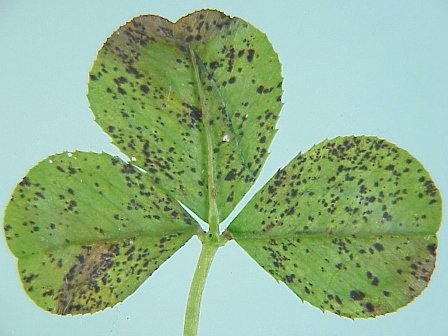Sooty blotch
Sooty blotch (SB) is caused by the fungus Polythrincium trifolii and is common on white and red clovers. It can appear in early summer but is most common in late summer and early autumn, rarely causing economic loss.
Identification
SB causes stunting and partial defoliation. Raised dark green patches appear on the upper surfaces of leaves. On the underside of these patches are black spots which produce numerous dark spores. Infected leaves initially look healthy, but then become dry, discoloured and die.
Spread
During summer, spores of SB are spread via wind and water. In spring infection occurs from sexual spores released at the end of winter from fruiting bodies in the trash.
Prevention and management
There are reports of toxicity to grazing stock. Diseased clover plants may also have higher levels of coumestans (flavonoid oestrogens) that can cause reproductive disorders in grazing animals. Timely grazing or cutting can minimise damage from this disease.

Sooty blotch on the underside of a clover leaf.

